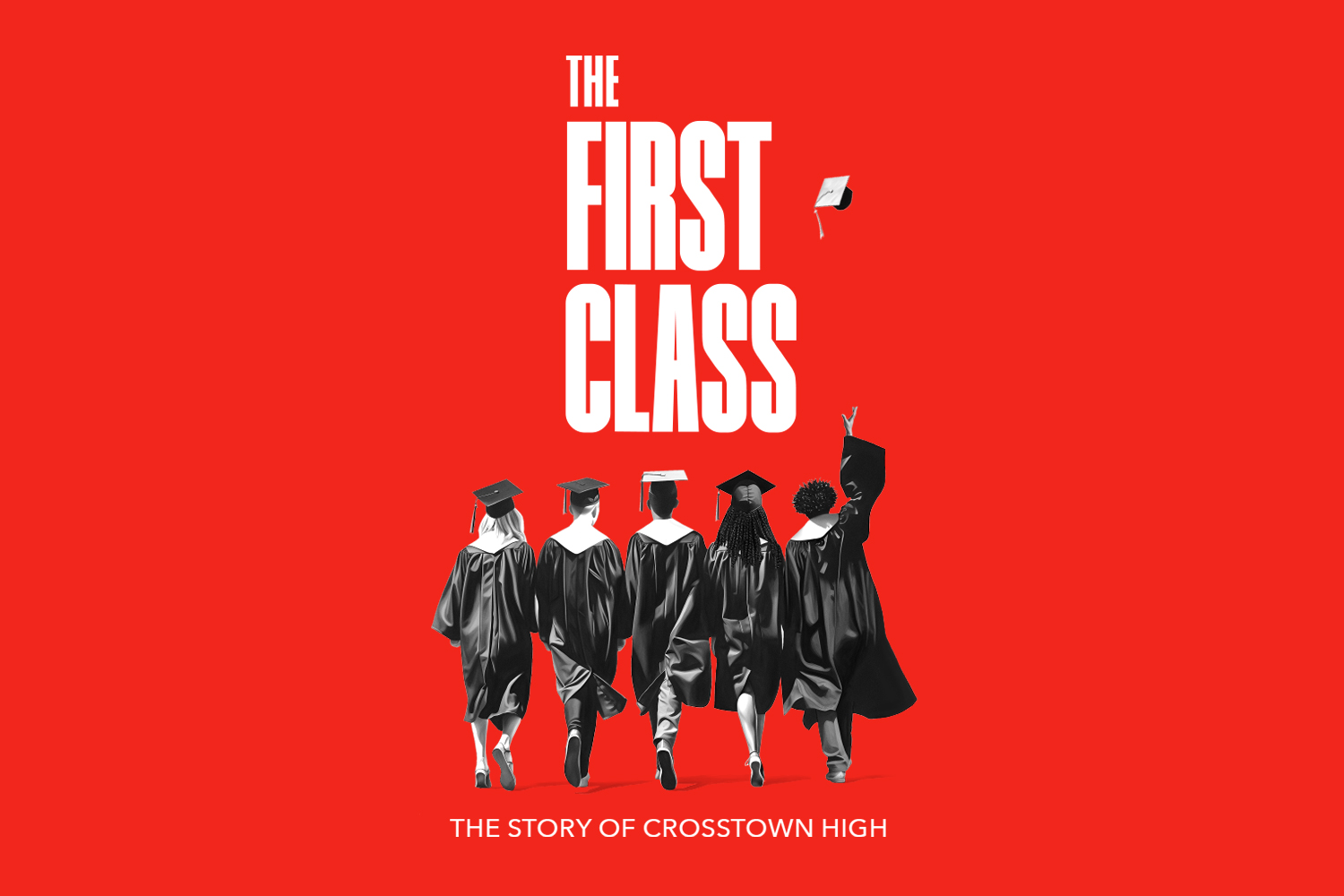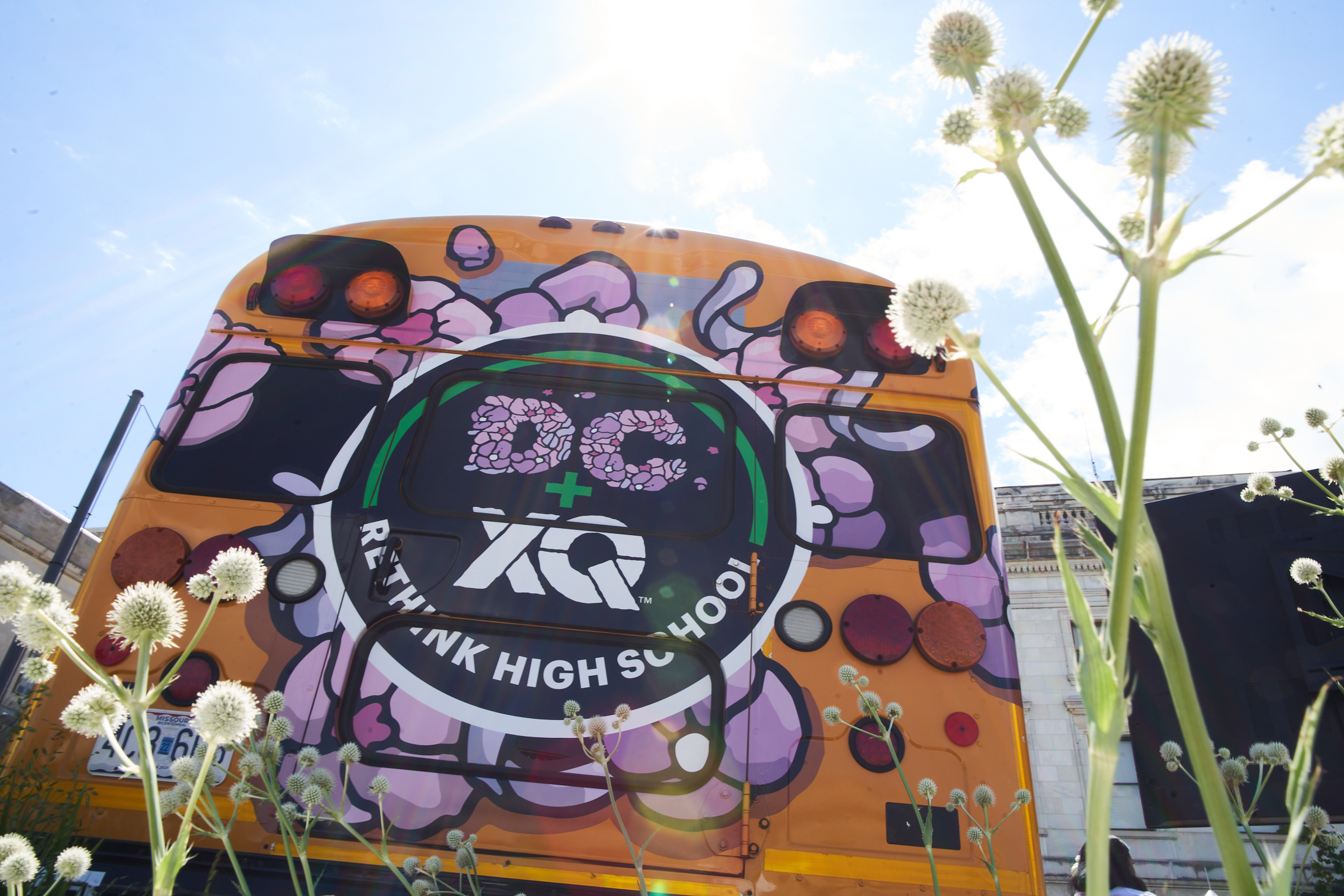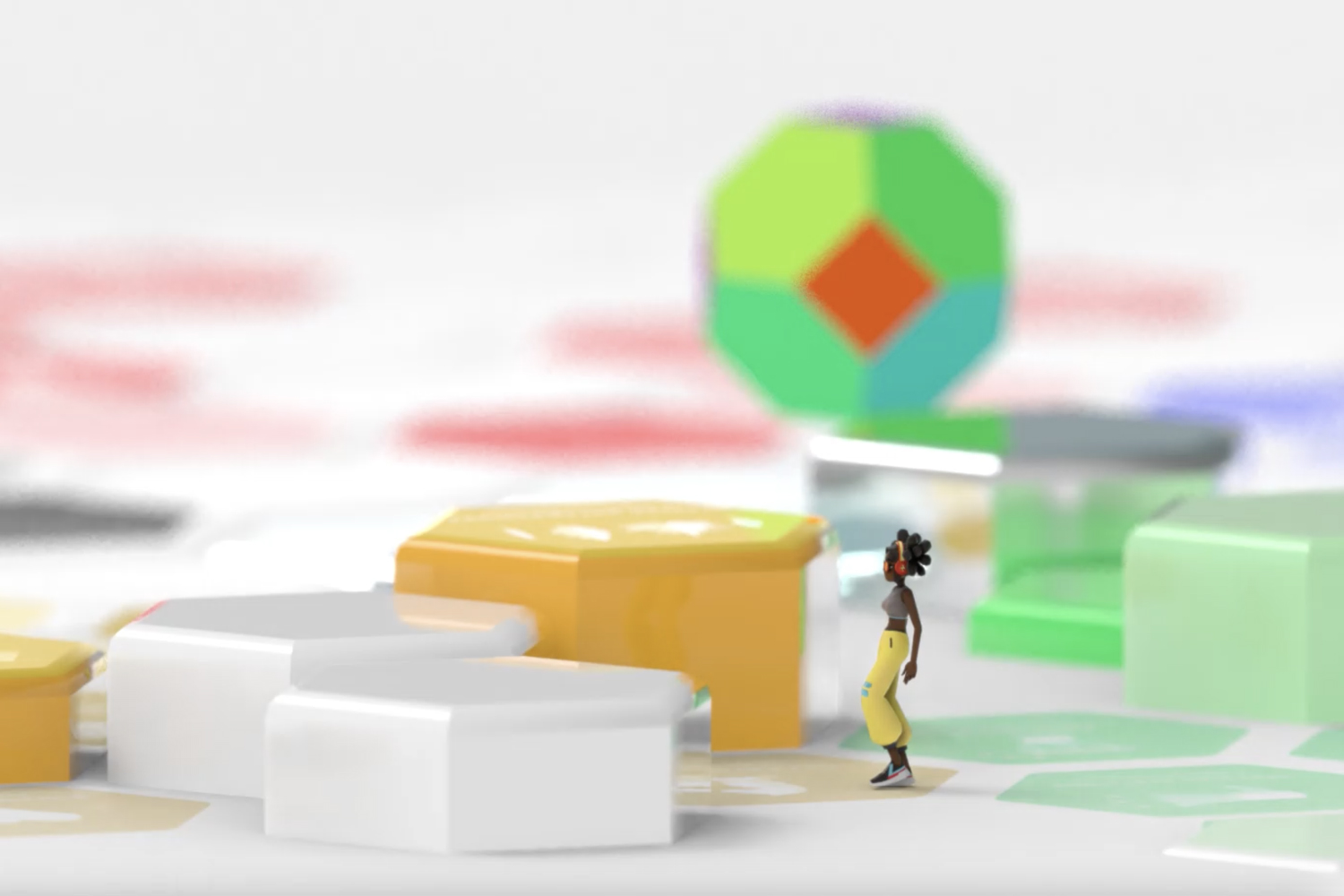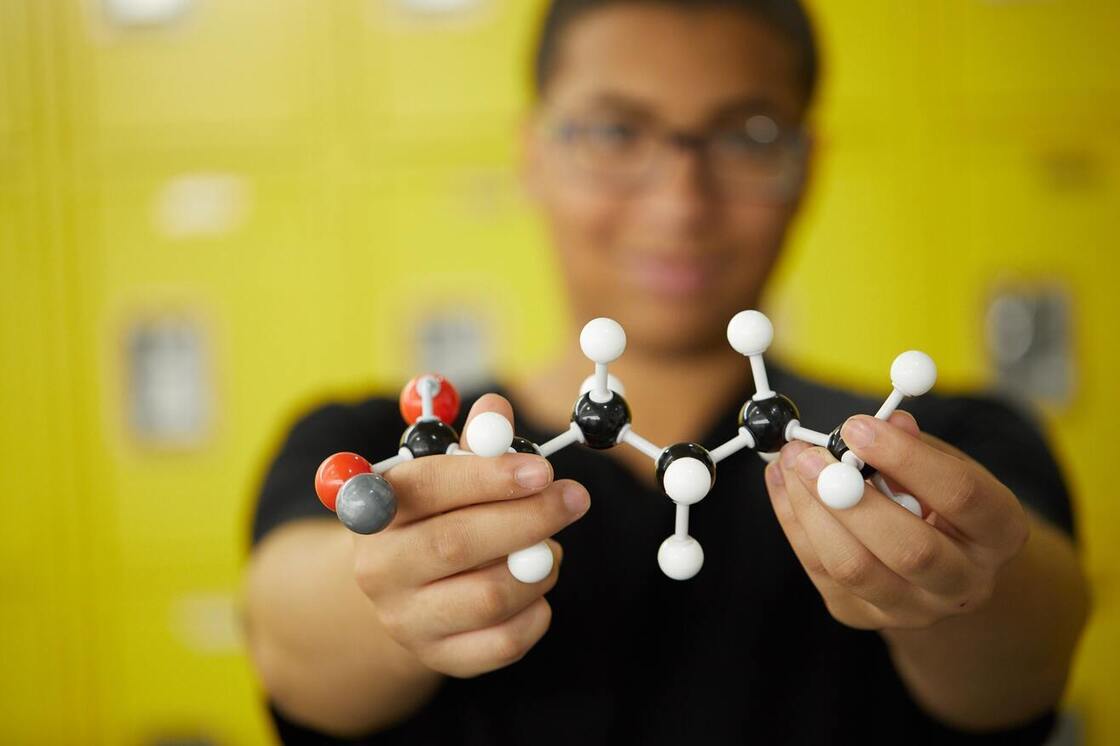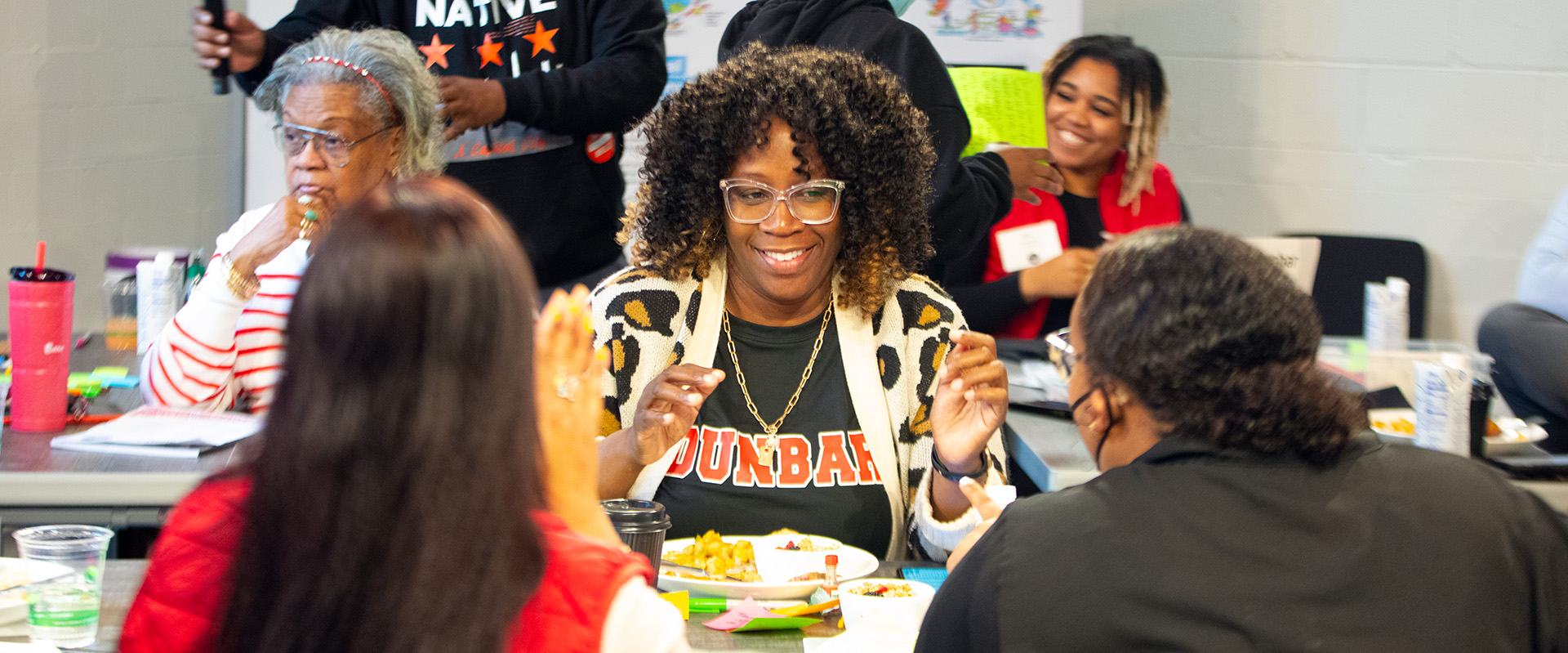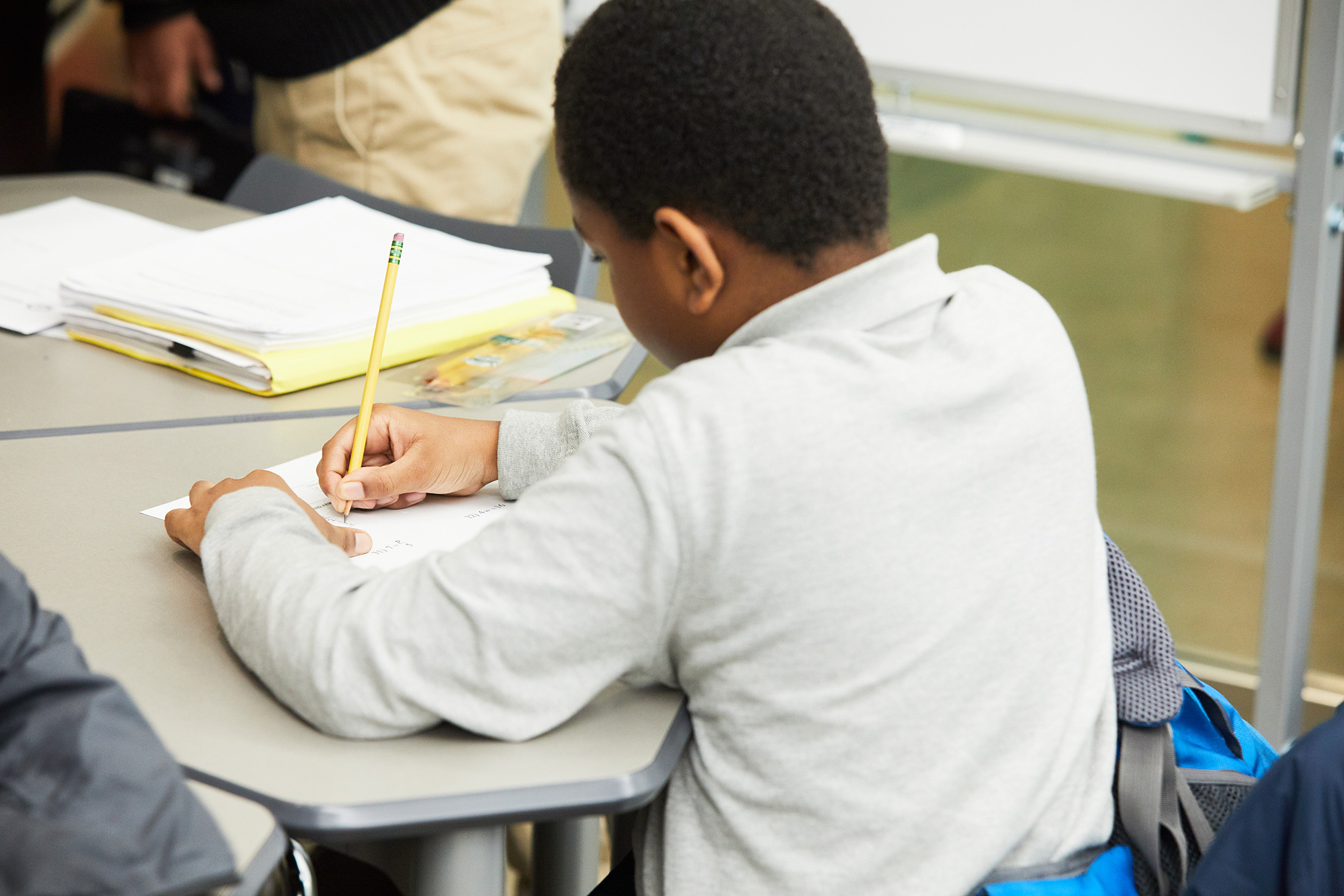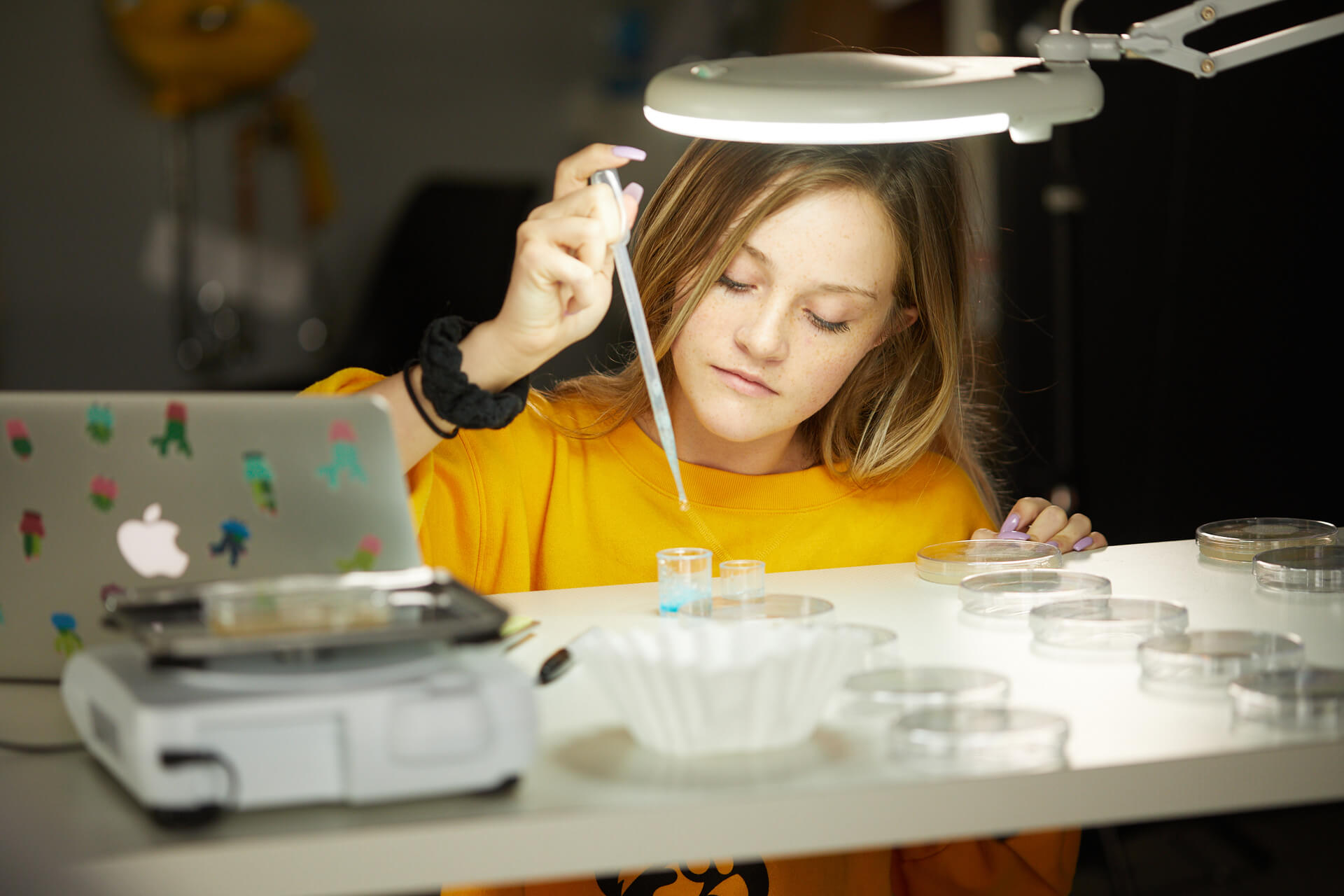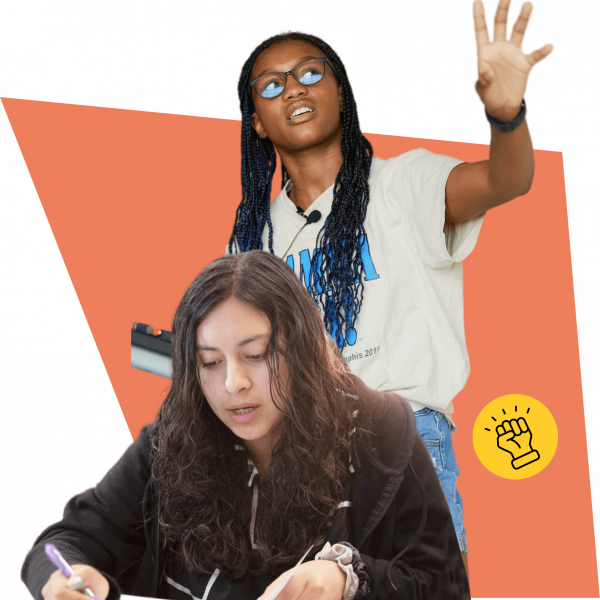Students Reflect on What It Means to Be the First Graduates of a High School Designed Just for Them
Círculos, an XQ school in Santa Ana, California, was designed for students with a community at the center. Four years later, the revolutionary school graduates its first class.
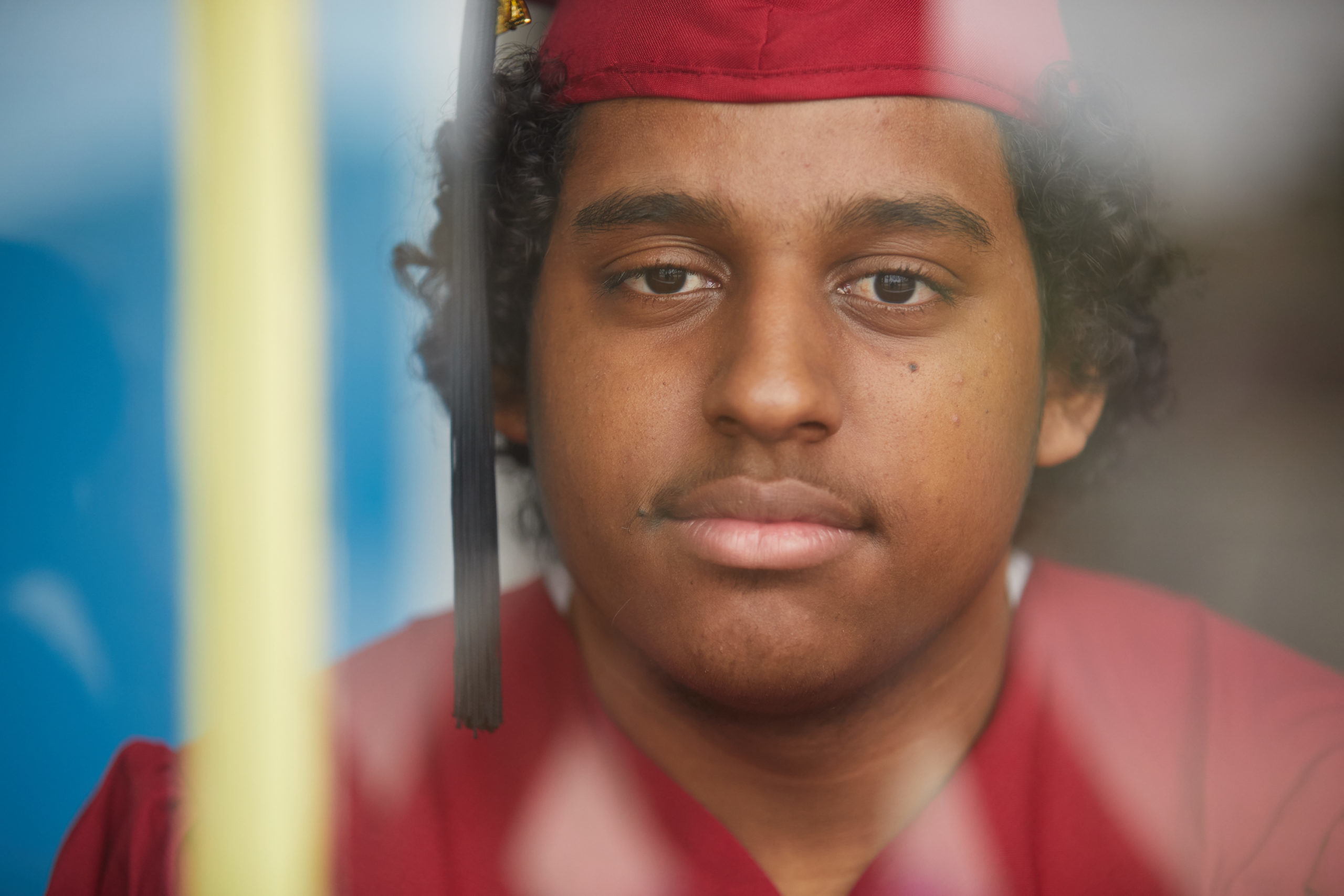
When Círculos, an XQ School in Santa Ana, Calif., opened its doors in fall 2018 with 12 students, the school’s aim was to provide a “circle” of support for students, within the school and the community. With a focus on place-based and project-based learning, students at Círculos would apply their academic knowledge to issues facing their community, gaining real-world experience while learning about the history and culture of the city in which they live.
And now that experiment has paid off. The school’s first crop of students will graduate this spring, with each one headed to college. They helped bring the school’s mission to life—creating the tight-knit, supportive learning community the founders envisioned.

“They’re our founding students. They’re school builders. They’re history makers,” said school leader Jessica Salcedo. “To see them graduate, well, it’s beyond anything you can imagine. I am so proud of them.”
From the onset, equity was at the core of the school’s design. In a district where 80% of students are English language learners and 100% participate in the free or reduced-price lunch program, Círculos leaders wanted to provide students with a rigorous education that would prepare them for the high expectations of college.
‘Classroom without walls’
The school accomplished all that and more, said graduating 12th grader Andres Medina.
Andres, whose parents are immigrants from Mexico, plans to enroll at UC Berkeley this fall and study political science. He credits his success to the support of teachers and classmates at Círculos, as well as the school’s innovative approach to education. With a focus on equity, Círculos differs from traditional high schools by structuring the school around four main principles: a competency-based approach; flexible learning environments; small learning communities, and a project and place-based approach.
“I was skeptical when I first looked at it because it was so different from traditional high schools,” he said. “It was a classroom without walls.”
But Andres quickly grew to appreciate the school’s dynamic approach to learning, which weaves rigorous academics with hands-on projects in the community, coupled with plenty of student input and agency. Along with his classmates, he worked with experts at Latino Health Access, a local health clinic, and learned about public health risks in his community, such as diabetes, obesity, and substance abuse.
He also spent time with historians at the Heritage Museum of Orange County, learning about the region’s past and how it shapes life in Orange County today.

The hands-on approach to learning doesn’t only occur off-campus. Inside the classroom, teachers constantly strive for ways to make academic lessons engaging and relevant.
For example, Andres created a two-week summer “civics camp” for elementary students, showing them government works and the importance of voting.
Andres was accepted into nearly every college he applied to, and won a prestigious scholarship from the Anaheim Angels baseball team that will cover most of his college expenses.
The above-and-beyond support of his teachers helped him get into college, but it was the overall school philosophy that gave him the confidence to succeed, he said. Teachers gave him the support and time to experiment, explore new ideas, and even fail. Those were invaluable experiences that helped him grow as a student, and as a person, he said.
“At Círculos, they don’t drill you with facts. They give you life skills,” he said. “They were always so open. ‘You want to do this? OK, let’s do it.’ They really taught me to be flexible and adaptable. That helped me grow beyond the classroom.”
A School with a Sense of Belonging
Alexies Benitez said the most valuable aspect of her time at Círculos was the focus on community—both within the school and in the city of Santa Ana. As a shy immigrant who moved to America from Guatemala at age 11, speaking little English, she relished the supportive and close-knit atmosphere at Círculos.
Her teachers not only valued her unique perspective, but they provided opportunities for her to grow academically and personally.
“The difference, at this school, is community,” she said. “When I first came to this country, I felt very alone. But this school was like a family. They really accepted me for who I am. Everyone was so nice and accepting, it gave me a real sense of belonging.”

The flexibility and focus on student voice at Círculos allowed Alexies to do several projects on issues important to her, such as violence against indigenous women and girls, and the intersection of culture and public health. With a classmate, she did a research project on mental health challenges faced by students whose parents faced deportation.
They interviewed psychology professors at Cal State Fullerton and Santa Ana Community College and other experts, and learned that many students dropout of school in order to earn money to pay for legal assistance for their families.
“It really made me appreciate the opportunities I have, that I’m not constantly in fear I’ll be separated from my parents,” she said. “I am very grateful for the opportunities I’ve been given.”
Projects like this are an integral part of Círculos’ efforts to combine project-based and place-based learning. They even have a name for it: P2BL. Projects like Alexies’ help improve the city and broader community, while simultaneously helping students apply their classroom knowledge to relevant, real-world problems. For Alexies, the projects sparked her curiosity in policy and public health.
Alexies’ hard work paid off. She won numerous awards for her speech and debate skills, including second place in an international speech competition. She also was honored for her poetry and prose by Santa Ana Unified School District, and won several scholarships from local foundations.
This fall, she plans to enroll at Cornell University and study biology and public health, with hopes of pursuing a career in culture and medicine.
“When I first came to Círculos, it was kind of scary. I didn’t know what to expect,” she said. “But when they said, ‘We’re going to remake high school,’ and I thought, wow—to be the first class, to be remembered like that, that’s something I want to be a part of.”
Learning from Each Other
Students aren’t the only ones learning at Círculos. As the school evolves, teachers and school leaders continually learn from each other, from students, and from families. That emphasis on continual learning has been part of Círculos’ core from the onset. One of the school’s original founders, Daniel Allen, put it this way: “Real learning, of course, happens as we develop conceptual understanding and skills that we didn’t have before.Learning takes time and exposure to new ideas. You need to deliberately structure time and experiences that will force you to learn new skills and consider new approaches.”
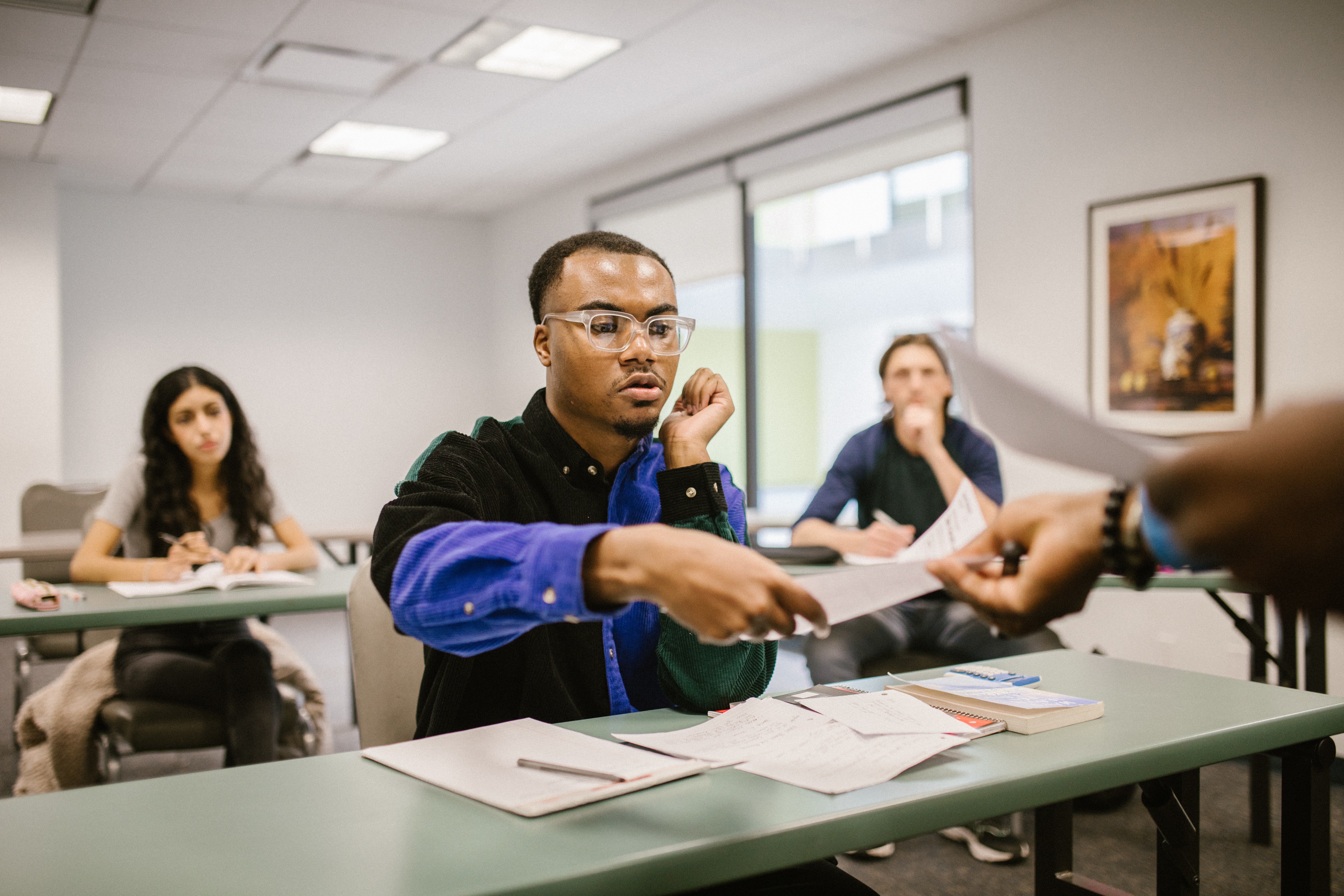
Learning is an act of humility and a continual willingness to leave one’s comfort zone. In the day-to-day school routine, teachers practice this in many ways, including listening to students—and each other—in deep, meaningful ways.
The staff holds three-hour meetings every Wednesday, along with regular listening sessions with students, to better understand what’s working and what can improve. They continually fine-tune curriculum and lesson plans to keep students engaged and meeting the highest academic standards. Special attention is given to students’ voices, so they have a direct impact on what—and how—they’re learning. For teachers, these meetings are a way to adjust their lessons to better meet students’ needs.
One experiment that was especially successful was co-teaching. The school pairs teachers from different subject areas to co-teach classes, giving students an interdisciplinary learning experience. Chemistry and geometry, physics and algebra II, and English and social studies are a few examples.
This approach, known as interdisciplinary teaching and learning, gives students a “more complete and coherent” understanding of the material they’re studying, according to researchers at Pedagogy in Action. It’s an important way for students to understand issues from multiple perspectives, enabling them to better tackle complicated issues in the real world.
A School Built with Equity at the Center
But the biggest priority at Círculos is equity. School leaders try to build equity not just into day-to-day campus activities, but into the very structure of the school, Salcedo said. At Círculos, the focus on equity goes beyond creating equal opportunities for students of color and low-income students. It’s a belief that all students can succeed, and a deep faith in students’ abilities to learn, grow, and pursue their passions. The result is a trusting environment that enables risk-taking, personal growth, and a willingness to learn from mistakes.
“We are an iterative place,” Salcedo said. “To create something that didn’t exist before, you have to be agile. You have to have conversations about equity all the time. We’re building whole new systems, from the ground up, with equity at the center.”
Learn more about Circulos and all the XQ Schools at: xqstaging.wpengine.com/schools

